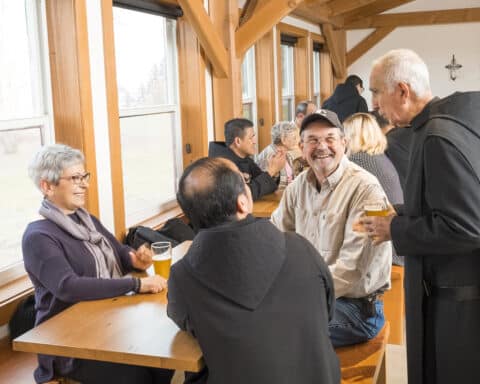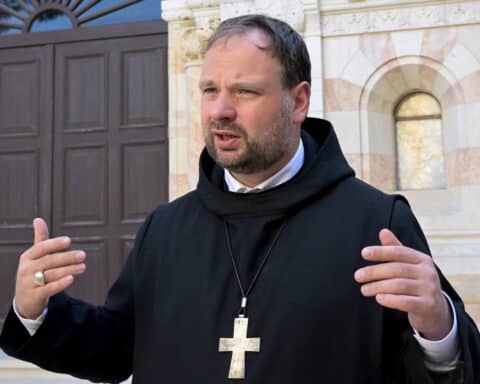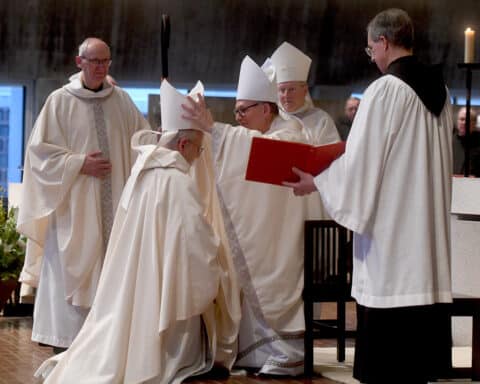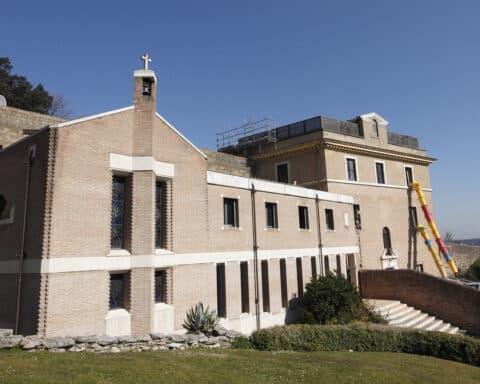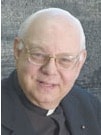
Why this recollection of the Benedictines? Because here in the United States, high school and college graduates, of any and all schools, appear as in the official garb of monks or nuns of the Roman Catholic Order of St. Benedict.
They wear gowns that carefully replicate the Benedictine cuculla. This is the history of the cuculla and the reason for the tradition of graduations. About 1,500 years ago, St. Benedict founded the religious congregation that bears his name. His foundation originally was in central Italy, but before long his monks were in monasteries or abbeys across Europe. St. Benedict’s twin sister, St. Scholastica, established a community for women, and in short order Benedictine nuns were numerous, from Scandinavia to Spain.
The centerpiece of Benedictine abbeys and convents always was, and is, the church. Often, these churches are great edifices. Westminster Abbey in London is an example. Until King Henry VIII separated England from Catholicism 500 years ago, Westminster was a Benedictine abbey. So is the breathtaking, medieval church atop the island of Mont St. Michel, just off the coast of western France. These great churches were professions of faith in themselves. God is perfect, and all symmetry and beauty reflects the divine perfection. The churches crowned the monasteries, as God wonderfully is the source and center of life and of all that is good.
It was hoped that the glory of these churches would inspire the monks and nuns, and all others, to lift their minds and hearts to God as they prayed.

The cuculla was practical. These grand churches were not heated. Winters were cold. The Benedictine cuculla enabled bodily warmth. It was, and still is, an ankle-length garment of black wool. To provide layers, better to trap body warmth, they had, and have, multiple pleats. Sleeves are abundant and full, and they reach to the wearer’s thumb. (“Cocoon,” the encasement for developing insects, is a word derived from “cuculla.”)
Graduates in America today wear garments at graduation that quite obviously are modelled on Benedictine habits, since, as the Benedictines spread from Italy throughout Europe, they took systematic education, research and love for the truth with them. Monasteries were centers of learning and of generosity in sharing learning.
This love for truth led monasteries to copy the Bible by hand, centuries before printing was invented. Evangelicals question the Catholic Church’s respect for the Scriptures. Were it not for the Catholic Church, no one today would have the Bible. Benedictine monks, and their Catholic Church, loved the Bible as the inspired revelation of God.
Monks studied the processes of the human body. Monasteries became havens for the sick. Since the monks, in their Catholic faith, believed that each and every person is a precious child of God, entitled to the respect of all, including authorities, the monks studied the law and the philosophy of law, believing that laws must safeguard human dignity and individual rights.
Monasteries were the great reservoirs of beauty in the arts. Masses and the Liturgy of the Hours, or praying the breviary, were enhanced by the best music that could be presented. Monks learned how to separate sounds and organized the notes “do, re, me.”
In a word, Benedictines were the experts, the learned and the informed, and they shared their knowledge for the betterment of all, thinking that perfection is in God alone, but humans can — and should — seek it.
When attending graduations, once they resume, look at the gowns and thank God for the Church and its love for truth, generously offered to any and to all.
Msgr. Owen F. Campion is OSV’s chaplain.


